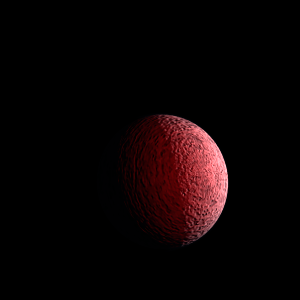|
|
Space Astro
|
Info for exoplanet "Etayube"
| Scientific (actual) data |
|---|
| Planet | HD 133131 A c |
| Planet status | Confirmed |
| Mass sini | 0.48 |
| Orbital period | 3407 |
| Semi major axis | 4.36 |
| Orbit eccentricity | 0.47 |
| Discovered | 2016 |
| Updated | 2016-08-24 |
| Tperi | 2452280 |
| K | 7.57 |
| Publication | Published in a refereed paper |
| Detection type | Radial Velocity |
| Mass detection type | Radial Velocity |
| Star name | HD 133131 A |
| Right ascension | 225.9° |
| Declination | -27.84° |
| Mag v | 8.4 |
| Star distance | 47 |
| Star metallicity | -0.306 |
| Star mass | 0.95 |
| Star sp type | G2V |
| Star age | 9.7 |
| Star temperature | 5799 |
| Wikipedia article | HD 133131 A c |
Back
| |
| Fictional info (?) |
|---|
| Suggested name | Etayube |
| Planet type | Cold planet |
| Etayube and Jipise-kocha are cold planets rich in ice. This cold planet is named after the deity Etayube, the demon of love and beauty.
An observer on Etayube would therefore see only one day every two years.
Etayube's axis has the smallest tilt of any of its solar system's planets.
The volume of water detected has been estimated to be equivalent to the volume of water in Lake Superior.
Etayube is primarily composed of molecular hydrogen with a significant part of its mass being xenon, though xenon comprises only about a small amount of the number of molecules. Because of its rapid rotation, the planet's shape is that of an oblate spheroid (it has a slight but noticeable bulge around the equator). |
| Atmosphere | Molecular hydrogen | 71% |
| Xenon | 20% |
| Hydrogen chloride | 8.1% |
| Water vapor | 0.00031% |
| Atmospheric pressure | 3.1 bar |
 |
| No known satellites |
| Google search for Etayube |
|
Website by Joachim Michaelis
|
|
|
|